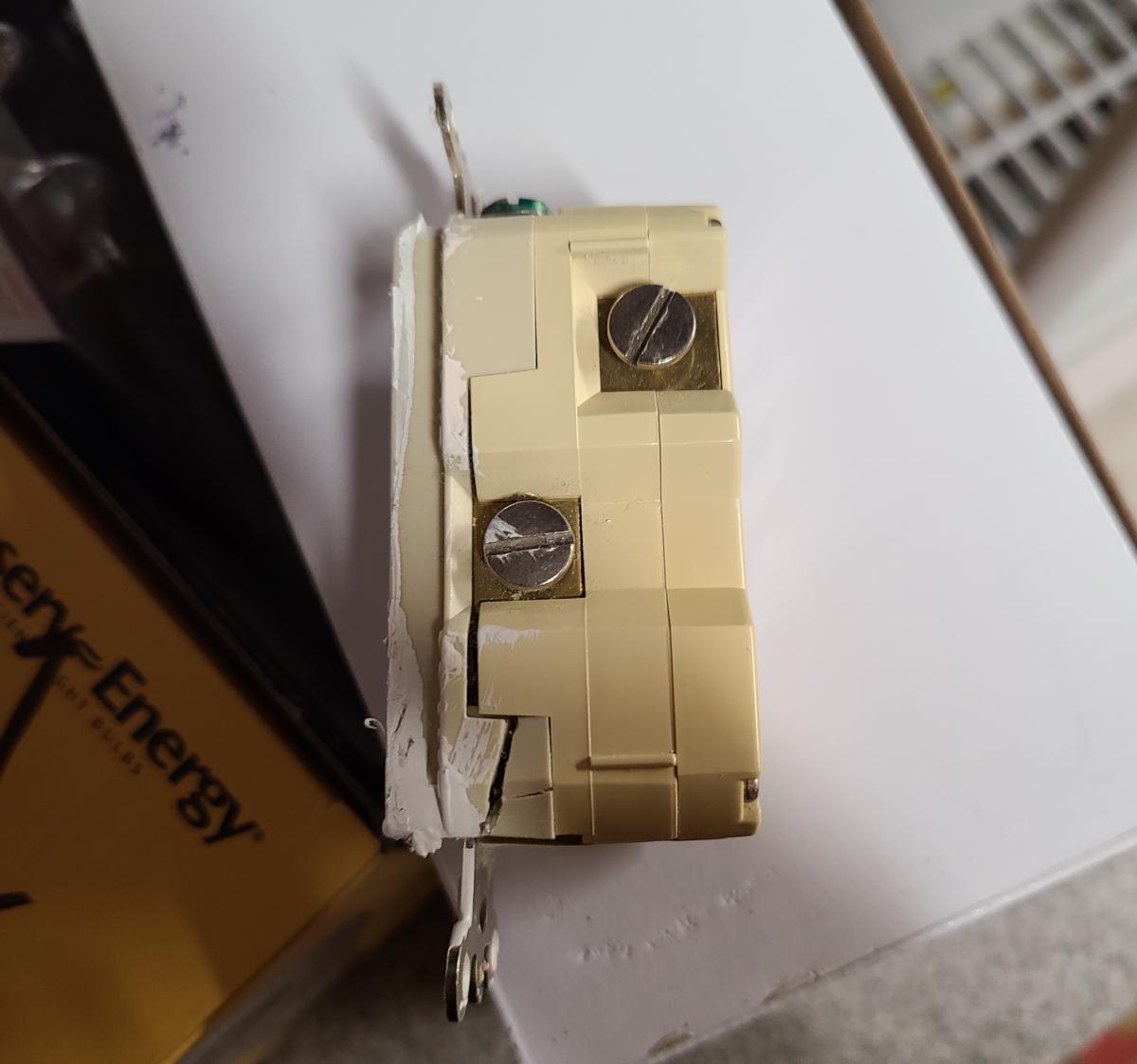I'm scratching my head trying to figure out an odd wiring situation and need some advice on what to do next (if any any).
tldr;
- My kids bathroom GFCI outlet box has two 2-wire romex cables coming in. One was wired to load, other to line, ground tied.
- With some testing using a NCV tester, I find that both cables are hot
- The "line" wire is hot when breaker #4 is on
- The "load" wire is hot when breaker #6 is on
- I wired my new GFCI outlet to breaker #4
- I capped + taped off the wires from breaker #6 and put it back inside the box.
- I left breaker #6 off (can't find any other outlets/lights connected to it)
- Why would someone have done this? What should I do next?
Full story:
(sorry for the long post)
There's a GFCI outlet in the kids bathroom where one socket doesn't work sometimes. I had been putting off replacing it for a while and finally got around to it today.
Before taking anything out I pushed the test button and the breaker tripped immediately. Strange, that should not happen. I saw two breakers (let's call them #4 and #6) had tripped. My house has multi-wire branch circuits (MWBC), so not too surprising that two would pop.
I turned both breakers back on, and my outlet tester showed both of them working. OK, weird - I was expecting the bottom outlet to not work. I tried the test button again, and both breakers tripped again. I figured it was just a faulty GFCI outlet and both circuits tripping was a result of the MWBC setup.
I removed the old outlet and found a small crack on the plastic, but the device seemed fine otherwise other than it's age.

The box had only two 2-wire cables in it (yay). One was wired to "line" and other to "load" on the old outlet. Both ground wires were tied and wired to the outlet. I copied the old configuration and wired the new outlet and turned the breakers back on thinking I was done.
My outlet tester did not come on for either socket. I went through the troubleshooting steps on the new outlet and saw that the fault LED was white and the reset switch was not depressed. This indicated that the line and load were flipped according to the manual.
After some additional troubleshooting, I found that both my "line" and "load" wires were powered by different circuits. My non contact voltage tester indicated that the "load" black wire is hot when I turn on breaker #4 and "load" is hot when I turn on breaker #6.
WTF? This doesn't make any sense. Why would anyone do this? Also, breaker #6 has been a mystery and I have not yet figured out it's purpose to date.
Out of ideas, I wired the new outlet to breaker #4, capped and taped wires from breaker #6 and put the outlet back in to the box. I've turned off breaker #6 for now.
I need some advice and questions and would really appreciate some help from the crew here. Thanks in advance.
Background about the house: It was built in 1980 and has been re-modelled 2 or 3 times (I don't have the history). I've been here a few years and am embarrassed I did not fix this sooner. One other oddity is that the other lights and outlet in this bathroom is wired to a different breaker. I've found a bunch of clowny wiring throughout the house - ungrounded garbage disposal, lights in different rooms wired to same switch etc. There's more info about my panel in a previous thread I asked before (I'm going to replace my panel this fall FWIW).
Questions
- Can someone confirm if the previous wiring was a hazard (for my sanity)?
- Could my readings and diagnosis be wrong? I used a NCV tester, I'm a little skittish with a multimeter and live A/C - so I didn't try that. I tested the following
- Breaker #4 off, #6 off and got no reading
- Breaker #4 on only, only the "line" black wire indicated live
- Breaker #6 on only, only the "load" black wire indicated live
- My tester has 4 different levels (3 orange, 1 red). I confirmed it works by testing it on a light switch.
- Is it safe to leave the breaker #6 wires in the same box with both breakers on?
- How can I trace breaker #6? I don't know what it does.
- The master bathroom is also on breaker #4 and it has multiple GFCI outlets. When I replace them, do I just need one GFCI at the "upstream" position?

